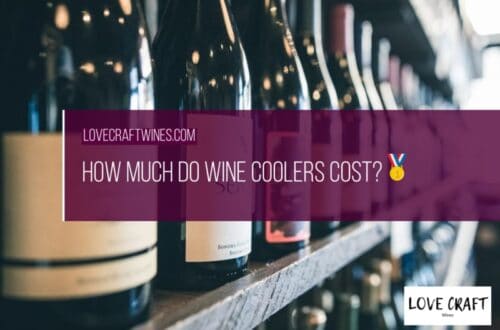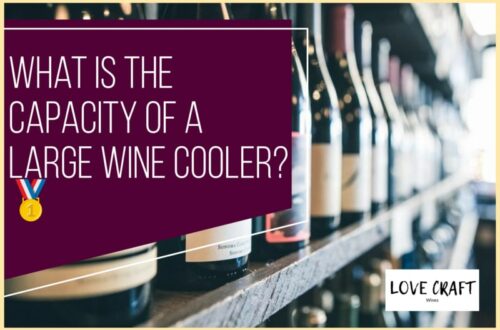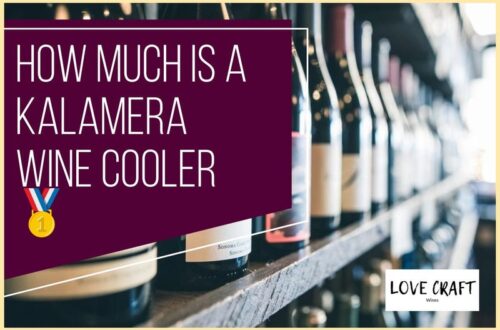Have you ever noticed the small indentation at the bottom of your wine bottle? It’s called a punt, and it’s been a fixture of wine bottles for centuries.
But what exactly is the purpose of this small, concave feature?
The answer to that question is multifaceted.
Originally, the punt was added to wine bottles to strengthen them, as glassmaking techniques were not as advanced as they are today.
But over time, the punt has evolved to serve other purposes, including as a decorative feature and as a way to help with the wine-making process.
In this article, we’ll explore the history and evolution of the punt, and examine why it continues to be an important part of wine bottle design today.
Table of Contents
The Origins of the Punt
As you hold a bottle of your favorite vintage, you may have noticed the small dimple at the base that seems to cradle the liquid inside, giving it a sense of weight and stability.
This small indentation at the bottom of wine bottles is known as the punt, and it has a significant historical significance that dates back to the early days of wine production.
The punt was originally used as a means of strengthening the bottle, as glass was not always as strong as it is today. However, over time, the punt also became a symbol of cultural associations.
For instance, some people believe that deeper punts are an indication of higher quality wines, while others associate the punt with the traditional methods of wine production that have been passed down through generations.
Strengthening the Bottle
You may not have noticed it before, but that little dip at the base of your favorite vintage is actually doing an important job – keeping your precious liquid safe and secure. The indentation, or punt, is not just for decoration, but rather for bottle stability.
During the manufacturing process, the hot glass is blown into a mold with an indent at the bottom. This helps to evenly distribute pressure and weight, preventing the bottle from easily tipping over. In addition to providing stability, the punt also adds strength to the bottle.
The extra glass at the base of the bottle adds to its durability, which is especially important for bottles that are being shipped or stored for long periods of time. This design feature has been used for centuries and has proven to be an effective way to ensure the safety of the wine inside.
As wine-making techniques evolved, so did the design of the wine bottle, leading to newer and more innovative designs.
The Evolution of Wine-Making Techniques
Throughout history, wine-makers have constantly improved their craft, resulting in more advanced techniques and innovative bottle designs that have withstood the test of time. Modern designs have incorporated sustainability practices to reduce waste and improve the quality of the wine.
Here are some examples of the evolution of wine-making techniques:
-
Stainless steel tanks: These tanks are a modern invention and provide a sterile environment for fermentation, preventing contamination and ensuring consistency in the wine’s quality.
-
Temperature-controlled fermentation: This technique regulates the temperature during fermentation, which allows for a more controlled process resulting in a more refined, higher quality wine.
-
Oak barrels: Oak barrels have been used for centuries in wine-making, but modern techniques have improved the aging process. Winemakers can now use smaller barrels, which allows for more control over the wine’s flavor and aroma.
-
Sustainable practices: Many wineries are now incorporating sustainable practices into their production, such as using organic farming methods, recycling water and waste, and using renewable energy sources.
The punt, or indentation at the bottom of wine bottles, serves a decorative purpose and can also have practical benefits. It is believed that the punt was originally created to make bottles more stable on a flat surface, preventing them from rolling around. However, modern wine bottles are made with thicker glass, making the punt unnecessary for stability.
Despite this, the punt has remained a popular design feature in wine bottles and is often used as a platform for the wine’s label.
The Punt as a Decorative Feature
The little dip in the bottom of wine bottles, also known as the punt, is more than just a design feature – it’s a fun way to add a bit of personality to your wine collection.
The decorative appeal of the punt has been used as a marketing strategy for many wineries, with some even going as far as to incorporate their logo or brand name into the design. But the punt is not just for show – it serves a functional purpose as well.
The indentation at the bottom of the bottle helps to distribute the pressure created by the carbon dioxide in sparkling wines and prevent the bottle from exploding. Additionally, the punt allows for easier pouring and swirling of the wine, enhancing the overall tasting experience.
So, next time you’re enjoying a bottle of wine, take a moment to appreciate the decorative and functional features of the punt.
The Continued Functionality of the Punt
Don’t underestimate the significance of the punt, as it continues to serve a vital role in maintaining the quality and safety of your favorite bubbly beverages.
The indentation, also known as the kick-up or dimple, at the bottom of wine bottles serves as a tool for wine-making and storage. The punt creates a stable base for the bottle to sit on, which helps to prevent it from tipping over. Additionally, the punt provides support to the bottle during the production process, such as when the wine is being corked or filled.
Contrary to popular belief, the punt is not just a decorative feature. It still holds importance in the wine industry today. For example, the punt can create an optical illusion that makes the bottle appear fuller than it actually is, which can be used as a branding opportunity for wineries to showcase their product’s perceived value.
Furthermore, the punt can also act as a reservoir for sediment that may form in the wine during storage or aging. This helps keep the sediment away from the wine’s neck and cork, which can affect the taste and quality of the wine.
So, the next time you enjoy a bottle of wine, take a moment to appreciate the punt at the bottom of the bottle and its continued functionality.
Frequently Asked Questions
How does the shape and size of the punt affect the taste of the wine?
The shape and size of the punt, or indentation, at the bottom of a wine bottle can actually affect the taste of the wine.
The punt provides a stable base for the bottle, preventing it from tipping over, but it also serves another purpose.
When wine is stored for a long period of time, sediment can settle at the bottom of the bottle. The punt allows the sediment to collect in one place, away from the wine, making it easier to pour without disturbing the sediment.
This can lead to a clearer, more refined taste. So, while the punt may seem like a simple design feature, it actually plays an important role in both bottle stability and wine quality.
Are all wine bottles required to have a punt?
If you’re wondering whether all wine bottles are required to have a punt, the answer is no.
While most wine bottles do have a punt, it’s not a requirement.
In fact, some wineries choose to forego the punt altogether and opt for a flat bottom instead.
The decision to include a punt or not depends on the winemaker’s preference and the intended use of the bottle.
Punt requirements vary by region, but generally, thicker glass is required for bottles with a punt to ensure stability and resistance to breakage.
Can the punt be used as a measure of the bottle’s quality or price?
When it comes to wine bottles, the indentation at the bottom, also known as the ‘punt’, is just one of the many design elements that can be used to enhance the bottle’s appearance and communicate marketing strategies.
While the punt can be used to add stability to the bottle during production, it’s not an indicator of the bottle’s quality or price.
Other factors such as the shape, color, label design, and closure type can all play a role in conveying the wine’s branding and appeal to consumers.
Ultimately, it’s up to the winery to decide which design elements to incorporate into their bottle to best reflect their brand and target audience.
What is the history of the design of the punt and how has it evolved over time?
The design evolution of the punt, or indentation at the bottom of wine bottles, has a cultural significance that goes back centuries.
Originally, the punt was created to make the bottle stronger and sturdier during transportation. However, as glass technology advanced and transportation methods improved, the practical need for the punt diminished.
Instead, the punt became a mark of distinction, a way for wine makers to differentiate their products and convey a sense of quality. Over time, punt sizes and shapes have varied, with some wine makers even using specially designed punts as a marketing tool.
Today, the punt remains a staple of wine bottle design and a symbol of prestige in the industry.
Do other types of alcoholic beverages, such as beer or spirits, use a punt in their bottle design?
Imagine a race where every participant is equipped with the latest gear and technology except for one. That one participant is a beer bottle without a punt.
The punt, a small indentation at the bottom of some wine bottles, is not just a design element but serves a purpose. Unlike wine bottles, beer bottles do not require a punt as the carbonation in beer is not as high as wine. However, some beer producers use a punt in their bottle design to enhance the appearance and stability of the bottle.
On the other hand, spirits bottle design has integrated a punt to provide a better grip and stability when pouring the liquid. So while the use of a punt in beer may be for aesthetic purposes, it serves a functional purpose in spirits bottle design.
Conclusion
Overall, the indentation at the bottom of wine bottles, or the punt, serves a number of important functions.
From its origins as a way to strengthen glass bottles, to its current use as a decorative feature, the punt has played a significant role in the world of wine-making.
As wine-making techniques continue to evolve and change, it’s likely that the punt will continue to serve a functional purpose, as well as a visual one.
Imagine the punt as the sturdy foundation of a great wine. It harkens back to the roots of wine-making, when bottles were made by hand and had to withstand the rigors of transportation and storage.
Today, the punt may be seen as a nod to tradition, a symbol of craftsmanship, and a way to ensure that your favorite bottle of wine remains safe and secure.
So, the next time you pour yourself a glass of wine, take a moment to appreciate the punt at the bottom of the bottle and all that it represents.





